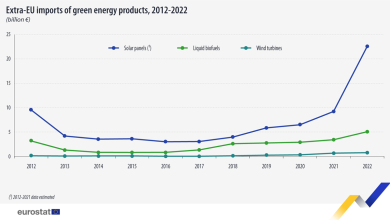New gas reference price linked to the Vienna Hub
A simple rule internationally accepted in the oil and gas industry is that the state is entitled to a share of the value of the extracted molecules. The so-called ‘government’s take’ has various shapes: it can be royalty on production, it can be a tax on income, it can be a share of the profit (under the production sharing systems), it can be a tax on supplementary income etc.
Government’s take must always be balanced and adapted to the factual situation as the fiscal regime is a two-way street: both the state and the investors must be happy (if one side takes too much, the other will seek alternatives).
Is it now the right time for it?
One essential condition for sanctioning new projects currently under consideration in Romania (especially offshore) relates to a clear and stable fiscal framework. Since 2013 there have been several working groups analysing royalties related scenarios and a reasonable draft law on royalties was put forward in October 2017 (but only to be withdrawn two months later).
There have been turbulent discussions in last years around the implications of the 2012 report of the Romanian Court of Accounts (which, among others, ascertained the need for a new computation formula of the reference price).
Within this context, the National Agency for Mineral Resources (NAMR) issued in mid-February 2018 the Order no 32/2018 (‘Order no 32/2018’) establishing a new computation method for the reference price of the natural gas extracted in Romania.
Order no 32/2018 repealed the old computation formula set under point II. of Annex 1 of NAMR Order no 98/1998 (that was anyhow suspended by the NAMR Order no 21/2008 approving the reference price for natural gas extracted in Romania).
Why is the reference price relevant? Because Article 49 paragraph (4) of the Petroleum Law no 238/2004 sets forth that the royalties are computed based on the reference price established by NAMR.
As such, changing the gas reference price (i.e. increasing it) means changing (i.e. increasing) the royalty paid by the gas producers. One of the immediate direct consequences of Order no 32/2018 will be that certain marginal gas fields will have to be relinquished (as they will turn out uneconomic).
The fundamental change brought by the new Order no 32/2018 is the computation formula which makes reference to the average stock exchange index for trading natural gas displayed on the Central European Gas Hub AG (CEGH), for the previous month.
There have been pros and cons expressed in relation to this reference. Details of such opinions (of both the investors and of the NAMR) may (at the date of writing this opinion) be consulted on the NAMR’s website (at http://www.namr.ro/legislatie/propuneri-legislative/consultare-publica/).
We would only point out that the gas producers (prior to Order no 32/2018) used to pay royalty by considering their actual sale price and not the old reference price frozen at a value (i.e. RON 495/1,000 cubic meters) which little exceeds half of the current sale prices (so, no prejudice caused to the state budget).
However, using an external reference price is not completely uncustomary in the industry (for example, some oil sale contracts concluded in Romania refer to the Ural oil price).
But the core question is whether the CEGH gas index is relevant for Romania? When BRUA (hopefully) will come onstream, one might think yes. But what about until then? How could such connection be justified as long as Romania is not a gas exporter? How could producers be asked to pay royalty on a price they cannot influence?
One note to be mentioned based on Article 5 paragraph (2) of the Technical Instructions regarding the takeover and sale of petroleum corresponding to the royalty (included under Annex 2 of NAMR Order no 98/1998) that was not amended: the royalty will continue be computed taking into consideration the highest value between the gas sale price and the reference price.
To conclude: while we do understand it was mandatory to amend the reference price and that it is not unconceivable to refer to external prices for various computation purposes, we do not favour (for the time being) the link to the CEGH index and consider that the sale price actually achieved by the producer could have been a better choice under the circumstances.
From a different angle, given this increase in the royalty, we are eager to see what the future royalty law will bring forward as in the end investors will take all these aspects (royalty, reference price, supplementary income tax, etc.) into consideration when analysing existing projects/taking final investment decisions for new projects.







